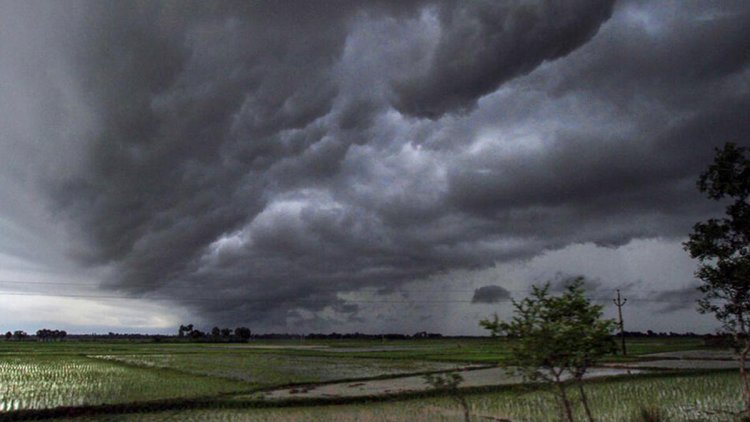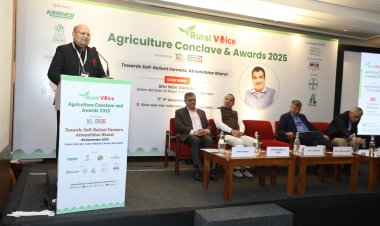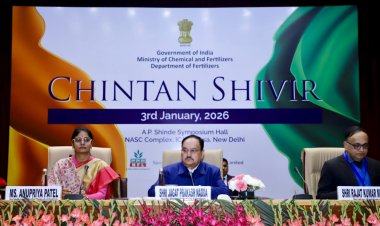After deficient rainfall activity resulted in India experiencing the driest August since 1901, the Southwest Monsoon is expected to revive over the weekend bringing rain to central and southern parts of the country, according to India Meteorological Department Director General Mrutyunjay Mohapatra.
He said September was likely to witness normal rainfall in the range of 91-109 per cent of the long period average of 167.9 mm. Even if the rainfall in September was to remain on the higher side, the June-September seasonal rainfall average is, however, expected to be below normal for the season.
He said development of El Nino conditions in the equatorial Pacific Ocean was the most important factor behind the deficient rainfall activity in August.
However, the Indian Ocean Dipole -- the difference in sea surface temperature of Arabian Sea and the Bay of Bengal -- has started turning positive, which could counter the El Nino impact, Mohapatra said.
He said the rainfall in the tropical region too was turning favourable and could play a role in the revival of monsoon.
Senior meteorologists say India is poised to experience the driest August since 1901, which is a clear result of intensifying El Nino conditions. Also, the monsoon this year may end up being the driest since 2015, which recorded a rainfall deficit of 13 per cent.
With a 32 per cent precipitation deficit in August, India is on track to record the driest August since 1901. August receives 254.9 mm of rainfall, accounting for around 30 per cent of the precipitation during the monsoon season. India recorded a rainfall deficit of 25 per cent in August 2005, 24.6 per cent in 1965; 24.4 per cent in 1920; 24.1 per cent in 2009 and 24 per cent deficit in 1913, according to IMD data.
The primary reason for below-normal rainfall in August are El Nino -- the warming of waters in the Pacific Ocean near South America -- and the "unfavourable phase of the Madden Julian Oscillation (MJO) which is known to reduce convection in the Bay of Bengal and the Arabian Sea". El Nino is generally associated with the weakening monsoon winds and dry weather in India.
The MJO is a large-scale intra-seasonal atmospheric disturbance originating in tropical Africa and travelling eastwards. It is like a pulse or wave lasting about 30 to 60 days. During the active phase of the MJO, the atmosphere becomes more favourable for rainfall. This leads to increased cloud cover, stronger winds, and enhanced convective activity, resulting in heavier rainfall over the Indian subcontinent.
"The favourable phase of MJO results in rainfall even if there is no low-pressure system. July recorded above-normal rainfall due to the favourable phase of MJO," IMD DG Mohapatra said. Only two low-pressure systems developed over the Bay of Bengal (BoB) against a normal of five under the impact of the prevailing El Nino conditions, he said. "Another reason for below-normal rainfall in August was a lower number of low-pressure systems in the South China Sea and they, too, moved northward," he said.
Low-pressure systems that develop over the South China Sea typically move westward, reaching the north BoB after crossing Vietnam and Thailand.
India experienced the longest break in the monsoon -- from August 6 to August 17 -- since 2009 which recorded 13 such days as El Nino gathered strength. The northward migration of the monsoon trough -- an elongated low-pressure area extending from heat low over Pakistan to the Bay of Bengal --leads to break monsoon conditions or suppression of monsoon rain over major parts of India especially in the core monsoon zone or the rain-fed agricultural region spanning from Gujarat in the west to West Bengal and Odisha in the east.
The northward movement of the monsoon trough or break-monsoon phase results in heavy rains along the foothills of Himalayas and parts of eastern India. Monsoon breaks and normal rains are part natural variability of the monsoon. However, El Nino causes these break monsoon phases to continue for a longer period. This is what we are seeing. The stronger the El Nino, the longer the break phase. El Nino is the primary reason for the high rainfall deficit in August.
Rainfall recorded between 94 per cent and 106 per cent of the long-period average (LPA), or 50-year average, is considered normal. Normal rainfall is critical for India's agricultural landscape, with 52 per cent of the net cultivated area relying on it. Additionally, it plays a crucial role in replenishing reservoirs essential for drinking water and power generation throughout the country. Rainfed agriculture contributes to approximately 40 per cent of the country's total food production, making it a vital contributor to India's food security and economic stability.




 Join the RuralVoice whatsapp group
Join the RuralVoice whatsapp group






































